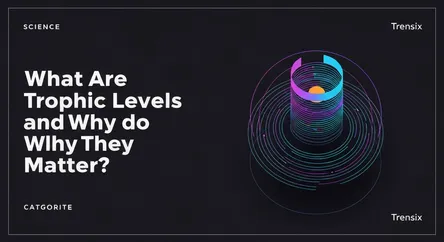Science
What Are Trophic Levels and Why Do They Matter?

Discover the position organisms occupy in the food web, how energy flows through ecosystems, and why it's crucial for environmental balance.
What is it?
A trophic level is the position an organism occupies in a food web. It represents a step in the transfer of energy and nutrients in an ecosystem. The levels start at Trophic Level 1 with primary producers, like plants, which create their own food through photosynthesis. Level 2 consists of primary consumers (herbivores) that eat plants. Secondary consumers are at Level 3; these are carnivores that eat herbivores. Level 4 includes tertiary consumers, which are carnivores that prey on other carnivores. Some ecosystems have additional levels, ending with apex predators at the top. Organisms like bacteria and fungi act as decomposers, breaking down dead organic matter and returning nutrients to the soil, available for producers.
Why is it trending?
The concept of trophic levels is fundamental to understanding ecosystem health and stability. With growing concerns about climate change and biodiversity loss, there is increased focus on how human activities disrupt these delicate balances. Scientists are studying how pollution and habitat destruction impact food webs. Furthermore, calculating the "Human Trophic Level" (HTL) has gained attention. This metric helps to quantify humanity's place in the global food web and assess the environmental impact of our dietary choices, showing that human diets place us, on average, at a level similar to a pig or anchovy, not apex predators.
How does it affect people?
Understanding trophic levels is vital for managing natural resources and ensuring food security. The energy transfer between trophic levels is inefficient; only about 10% of energy moves to the next level. This means that diets with food from lower trophic levels (like plants) are more energy-efficient and sustainable. Human activities, from agriculture to pollution, can have cascading effects throughout the food web. By impacting one trophic level, we can inadvertently harm others, affecting biodiversity and the ecosystem services, like clean water and pollination, that people rely on.